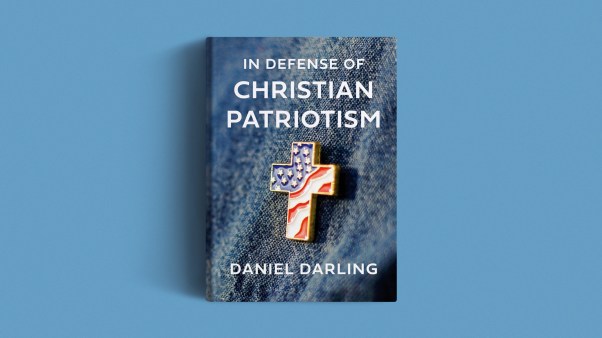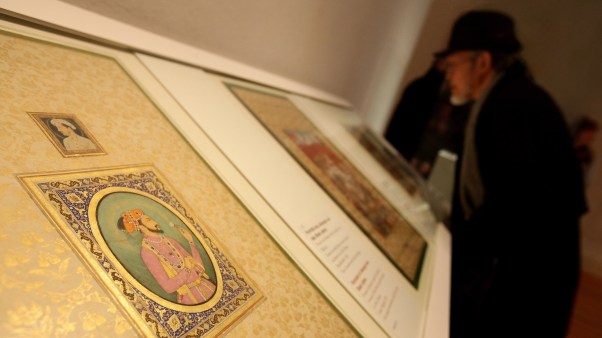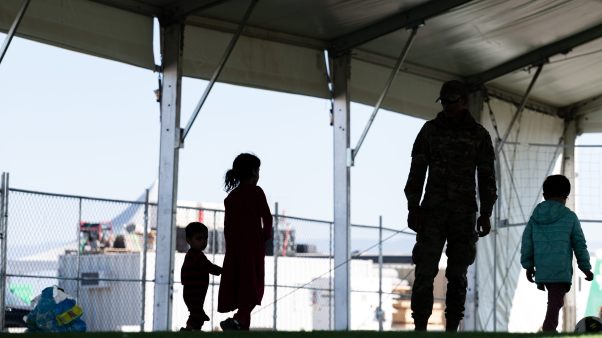Few biblical problems are more complex than the relationship between the first three Gospels. In two recent contributions to CHRISTIANITY TODAY (Nov. 10 and 24, 1958 issues), John H. Ludlum, Jr. contends that the modern solution of the synoptic problem is a critical shibboleth uncritically held by critical scholars. He dismisses the alleged priority of Mark as an unproven theory and suggests that the linguistic facts are satisfactorily explained by the hypothesis of the priority of Matthew in an Aramaic form. He believes this is necessary to restore the relative independence of the three Gospels. He states that he has found no “single, unequivocal piece of internal evidence” which indicates that Mark was the earliest Gospel.
Let us admit that modern form and source criticism have often been used to the detriment of the authority of the Gospels and historicity of their record. Because the present author accepts the Bible witness to itself, that it is the inspired Word of God, he has been willing to accept critical theories only when the facts seem to demand them. Weighty internal evidence pointing to the priority of Mark, however, exists not only in the linguistic minutiae of the Gospels but even more impressively in the selection and arrangement of the material.
To gain perspective for such a study, we must place the literary facts against the background of historical probability. All will agree that none of the Gospels purports to give a complete account of the words and works of our Lord. John indicates that libraries could be filled with books if all that Jesus said and did were recorded (John 21:25). Each of our Gospels gives us a limited and controlled selection from the tradition of Jesus’ life and ministry.
Suppose that on the day after the Ascension, four of the apostles wrote four 75-page thumbnail sketches of the life of Christ independently of each other, the bulk of our Lord’s words and deeds fresh in their minds. What is the possibility that the four authors would select basically the same materials? Probably some “highlights” would be reported by all: the baptism and temptation, the confession at Caesarea Philippi, the transfiguration, the triumphal entry, the last supper, the betrayal, trial, crucifixion, and resurrection. This basic agreement we might expect. But the omission of several of these events in John proves that a valid Gospel does not require the inclusion of even these mountaintop experiences.
Aside from these critical events, we would surely expect great variety in the words and deeds of Jesus selected in illustration of his ministry. Matthew tells us that Jesus went about all Galilee teaching in the synagogues and healing all kinds of diseases (Matt. 4:23–25). Similar summaries indicating an extensive ministry are recorded in Matthew 9:35; Mark 1:39; 3:7–8. When a limited selection must be made from such a vast wealth of material, we would surely expect four writers to choose very different materials.
The Common Core
The fact is, however, that out of the 82 units of Markan material in Burton and Goodspeed’s Harmony of the Synoptic Gospels, only two units do not appear, in one form or another, in one of the other Gospels. These are the parable of the seed growing by itself (Mark 4:26–29) and the healing of the blind man of Bethsaida (8:22–26). This fact points to one obvious conclusion: the synoptic Gospels made use of a common core of tradition, either written or oral. No other theory explains the appearance of the same selection of material in all three Gospels.
Let us illustrate this from the first paragraphs of Mark. Why did Mark in 1:14–38 choose this particular day in Capernaum? Does he relate everything that happened on this day? Why is Capernaum chosen? Mark 1:38, 39 tells us that Jesus visited many towns in Galilee preaching and teaching, and John chooses to pass by Capernaum with a word (John 2:12) and relates an event which occurred in Cana.
Why is this particular cleansing of a leper recorded (Mark 1:40–45) when other such miracles occurred (Matt. 11:5)? No special significance is attached to this event; it is cited, as it were, as “Exhibit A” of Jesus’ power and fame, and any other similar miracle would have served the same purpose. Why do the three Gospels relate the same few incidents when there were so many more to choose from, unless they deliberately follow a fixed tradition embodying Jesus’ words and deeds?
The Common Arrangement
A second fact has to do with the way in which the evangelists arrange their materials. Our modern method of writing biography attempts to arrange materials in accurate chronological order and to describe all events in their proper setting in time and place. Biography is interested not only in what happened, but in where and when it happened. However, the evangelists were not twentieth century biographers, and to evaluate them in terms of modern biographical writing invokes an improper criterion. The evangelists were interested in what happened but were often unconcerned about when or even where it happened. Many of the words and deeds of our Lord are arranged from editorial rather than chronological considerations. Form Criticism has seized upon this fact and has unnecessarily discredited all chronological notes, attributing them to the evangelists and not to the facts of history. This goes altogether too far. In his early paragraphs, Mark sometimes follows chronological considerations but sometimes ignores chronology. “And immediately he left the synagogue” (1:29), “That evening” (1:32), “And in the morning” (1:35) show that Mark 1:21–38 purports to relate a day’s ministry in Capernaum. But the following paragraphs omit such specific references to time; the several events of Mark 1:40–3:6 could have occurred and probably did occur on different occasions. Mark groups them to illustrate our Lord’s person and ministry without indicating that they occurred in sequence or that they belonged together temporally. Jesus returned to Capernaum “after some days” (2:1) and healed a paralytic. He went out beside the sea (2:13) and called five to discipleship. He was at dinner in the house of Levi when Pharisees criticized his conduct (2:15). The discussion about fasting (2:18–22) is related without reference to time and place. The controversy about Sabbath-keeping occurred “one Sabbath” (2:23). The healing of the man with the withered hand took place when he again entered the synagogue (3:1).
This is not biography in any proper sense of the word but a series of vignettes portraying the kind of person Jesus was. A Gospel is a portrait, not a biography giving the life story of its central character. Mark could have selected many other events to serve his purpose of portraying Jesus Christ as the Son of God (1:1), and he could also have arranged many events in different order without being untrue to either history or his purpose. Mark made this particular selection of material and grouped much of it as he did because it was typical and because it adequately illustrates Jesus’ divine power and person. This is not to suggest that his record is unhistorical or undependable, as extreme form critics contend. It merely recognizes Mark’s own purpose and the character of his composition. In short, Mark selects and groups much of his material not because “it happened that way” but to make an impression on his readers. Often this Gospel writer is disinterested in the questions when or where the various incidents took place; even when he includes such references, they are usually secondary to his purpose.
Recognition that the selection and arrangement of events in Mark are in part editorial is basic for our understanding of the literary relations of the Gospels. It is universally recognized that the first half of Matthew is even less interested in chronological arrangement than is Mark. However, not only does most of the same material appear in all three Gospels, but the same basic order is also preserved even when this order does not purport to be one of chronology. There is no historical or theological reason why the same basic selection of materials should appear in all three Gospels or why the events should be arranged in the same basic order if the Gospels were written in relative independence of each other. The reason must be literary. The selection and arrangement of material require a theory of relatively close interdependence.
Which Gospel Came First?
We must now go a step further and ask if there is any objective criterion for discovering whether one of the three Gospels is prior to the other two. Do agreement and disagreement in the arrangement of material fall into any pattern?
If the Gospels were written in relative independence, we would expect that each Gospel would at times agree with each of the other two against the third. The pattern should appear as follows:
Sometimes A will agree with B against C; sometimes A will agree with C against B; sometimes B will agree with C against A.
If the Gospels derive their order of events from a common source—either a fixed oral tradition or a lost primitive Gospel—we would expect a similar pattern. (Note: a line without arrows means agreement; a line with arrows, disagreement.)
Sometimes all three will agree in following X and will therefore agree with each other (1); sometimes all three will depart from X and will therefore disagree with each other (5); and every other possible combination of agreement and disagreement might be expected: A with B against C (2); A with C against B (3); B with C against A (4).
If however one of our present Gospels provided the basic order of events which is followed by the other two, the pattern to be expected is this:
The pattern will be: B and C agree with A and therefore with each other (6); or B agrees with A against C (7); or C agrees with A against B (8). We will not expect to find agreement between B and C against A (9), for they are not dependent upon each other but upon A.
In other words, if Matthew (either the Greek or Aramaic Gospel) is the earliest Gospel, we will not expect to find Mark and Luke in agreement against Matthew; but if Mark is the earliest Gospel, we will not expect to find Matthew and Luke in agreement against Mark.
A Test Case
We may test this pattern by Matthew 4–12 where there is the greatest variety in the arrangement of material, and we may use the units which appear in Burton and Goodspeed’s Harmony. It will be obvious that we need discuss only the units recorded by all three Gospels.
An analysis of the units appearing in the three Gospels leads to the following conclusions:
1. The three Gospels agree in their arrangement.
5. Matthew places the healing of the leper immediately after the Sermon on the Mount and just before the healing of the centurion’s servant. Luke, which also records the Sermon on the Mount, diverges from Matthew by placing it (together with the account of the Call of the Four) between the preaching tour in Galilee and the healing of a leper. Mark has the same order as Luke. Luke and Mark thus agree against Matthew.
7. Matthew places the healing of Peter’s mother-in-law after the healing of a centurion’s servant in Capernaum. Luke departs from Matthew by placing the miracle between the healing of a demoniac and a preaching tour in Galilee. In this Luke agrees with Mark against Matthew.
8–10. Matthew relates the stilling of the tempest after the healing of Peter’s mother-in-law. Mark departs from Matthew and places this incident on the evening of a day of parables. Luke also departs from Matthew, placing this miracle immediately after the parables, thus agreeing with Mark against Matthew. Furthermore, Matthew relates at this point an incident with three prospective disciples. Luke relates this incident in a different context, failing to follow Matthew but rather following the arrangement of Mark.
11. The three Gospels agree in placing the incident of the Gadarene demoniac after the stilling of the storm.
12–14. Matthew next records three incidents in and around Capernaum. Mark departs from Matthew by recording these three events after the healing of a leper (5); and the arrangement in Luke follows Mark rather than Matthew. Again, Mark and Luke agree against Matthew.
15. Matthew next relates the raising of Jairus’ daughter. Mark has a different arrangement, placing this event after the Gadarene demoniac. Luke has Mark’s order rather than Matthew’s. Again, Mark and Luke agree against Matthew.
16–20. These five units follow the same basic outline with several notable variations. Matthew relates (16) two miracles not recorded in the other Gospels. We have inserted the rejection at Nazareth (17) in the outline because it stands in Mark between the raising of Jairus’ daughter and the sending of the apostles. The three Gospels agree in placing the mission of the apostles shortly after the raising of Jairus’ daughter, but Matthew and Luke place the rejection at Nazareth in different contexts from Mark. Here, the three Gospels disagree with each other, although Matthew and Mark agree against Luke in placing the rejection after the day of parables.
22–24. After the discourse of chapter 10 and the visit of John’s disciples (21), Matthew records three incidents: the plucking of grain on the sabbath, the healing of a withered hand, and the fame of Jesus. Mark has this same grouping of material but arranges it differently, placing it after the question about fasting. Luke follows the arrangement of Mark rather than Matthew. Again, Luke agrees with Mark against Matthew.
25–26. Matthew next relates the Beelzebub controversy and the question about Jesus’ kindred. Mark adjoins these two units but between them and the fame of Jesus inserts the record of the choosing of the twelve (Mark 3:13–19a)—an incident omitted in Matthew. Luke records the choosing of the twelve with Mark’s arrangement. But Luke departs from both Matthew’s and Mark’s order in the Beelzebub controversy and the question about fasting, relating them separately and in different contexts.
A clear pattern emerges from this analysis. Luke frequently agrees with Mark against Matthew; but Luke and Matthew do not agree with each other against Mark. Therefore since the priority of Luke is not a live option, we must conclude that Mark is the earliest Gospel, that Luke follows Mark’s arrangement of material quite closely while Matthew follows it more freely. Only the priority of Mark can satisfy these literary facts.
What Are The Consequences?
If Matthew and Luke knew and used the Gospel of Mark, must we not draw conclusions damaging to the historicity of our Lord’s ministry and to the authority of the witness of the first and third Gospels? Have we not exchanged three independent witnesses for a single witness repeated three times? So the argument often runs. This conclusion is however quite unnecessary. If we were to think of “Matthew” and “Luke” as two men sitting at a desk in their studies who had no living contact with the events they recorded except through written records and who pieced various documents together like college freshmen writing their first term papers by compiling a string of quotations, some such conclusion might follow. But such a “scholarly” picture is utterly unrealistic. The unanimous external tradition, beginning with the Muratorian Fragment (ca. 200 A.D.) attributes the third Gospel to Luke, the companion of Paul. Luke was in Palestine during the two years of Paul’s Caesarean imprisonment (Acts 24:27). Here was an opportunity to talk with people who had known and seen the Lord and to investigate the origins of the Gospel. Luke himself tells us of written records in which the traditions about Jesus had been handed down by eyewitnesses (Luke 1:1–4). Luke’s language indicates that he was no passive recipient of either oral or written traditions but had personally looked into these things. Therefore if Luke knew and used Mark’s Gospel, he did so because he was convinced it contained an accurate and trustworthy record of the words and works of Jesus; and since Mark’s Gospel embodied the testimony of the apostle Peter (Eusebius III 39, 15), why should not Luke make use of the apostolic witness, thereby making it also his own testimony?
A similar line of thought illuminates Matthew’s use of Mark. It is frequently thought that the theory of the priority of Mark excludes the possible apostolic authorship of the first Gospel, for it is held to be unreasonable for an apostolic eyewitness to make extensive use of a Gospel written by one who was not an eyewitness (Mark) when he had his own personal experiences and memories to draw upon.
To this two things are to be said. First, the first Gospel does not claim Matthean authorship. Matthean authorship is derived from a critical evaluation of the external evidence or witness of the early Church to the Gospels. Second, if this external evidence to the Matthean authorship is sound, is it incredible that an historical situation actually existed justifying Matthew’s use of the witness of the second Gospel even though it was not the work of an eyewitness?
Such a situation is entirely possible, and we possess a number of facts from which we may derive a clue. First, the witness of the early Church attributes the tradition embodied in the second Gospel to the apostle Peter and makes it of Roman provenance. Second, the external witness to the first Gospel places its origin in Antioch. Third, Papias tells us that Matthew wrote “the oracles” in Aramaic which had been interpreted (translated) in various ways. This suggests a subsequent normative translation which replaced these earlier Greek translations. Fourth, strong tensions existed between the Jewish and Gentile wings of the early Church (cf. Acts 21:17–21). The first theological controversy, reflected in the Galatian epistle, arose over the question of whether Gentiles must become Jews in order to become Christians. Fifth, Antioch was a center of this tension (cf. Acts 15:1–2; Gal. 2:11 ff.).
If Matthew wrote a first edition of his Gospel in Aramaic for the Jewish-Christian community in Antioch and Mark wrote a Gospel in Rome embodying the Petrine tradition, it is entirely credible that when Matthew later produced a second edition in Greek, he made free use of the Petrine Gospel, thereby adding his own testimony to its authority and proving that the apostolic witness to Christ was not divided. Why is it incredible, in view of the tensions which existed in the early Church, that one apostle should make use of the witness of another, especially a work coming from one of Peter’s pre-eminence? The fact of the matter is that we do not know the precise historical situations which gave rise to the several Gospels nor can we exactly date them. Therefore our theories must come far short of dogmatism or proven fact, whether they are theories which seem to support or weaken the authority of the Gospels. Suffice it to say that the usual solution to the synoptic problem does not necessarily mitigate against either the authority, the apostolic origin, or the inspiration of the Gospels. Inspiration has not occurred in the sort of historical vacuum attributed by the Jews to the translation of the Septuagint. Inspiration operated through living men and actual historical literary processes; and all of our critical skills are necessary to try to recover the historical processes through which the spirit of God has given us the inspired Scriptures.
END
WE QUOTE:
EDWARD L. R. ELSON
Minister, National Presbyterian Church, Washington
During this first week of the new Congress, what word ought to be said to those who undertake service in our national government?
After more than 12 years in this pulpit, covering four Presidential terms and seven Congresses, I am moved to offer some propositions in heeding our Lord’s injunction: “Render to Caesar the things that are Caesar’s and to God the things that are God’s.”
First of all, find a church in Washington which is clearly committed to the eternal gospel of Jesus Christ. Attend that church in season and out. To the extent you are permitted by your presence here, enter with the family into its fellowship, its organization and witness. Put your Sunday church service on your calendar and make it your most important regular weekly appointment.…
There are many great tasks and some lesser ones in Washington. There are some greater and some lesser challenges. But the highest challenge to a man in Washington this new year is to be God’s man—to be sensitive to God’s Spirit, to maintain the spiritual disciplines of prayer and common worship, to heed the message of God’s word and to have a commitment higher than one’s self, nobler than one’s office, beyond the pull of partisanship, reaching to God’s very throne.…
Many a man who has been an officer of his home church and a leader in religious endeavor in his home district, has discovered while continuing these pious practices in Washington that he is lampooned by his adversaries who allege that he now plays politics at prayer meetings and goes to church to get votes. Of course, this is only negative exploitation of religion by the accuser and is to be dismissed as such. A Christian in Washington official life must be … great enough to take all this and turn it into a testimony for Christ.…
Based upon what you are likely to hear or read from some Protestant sources, it may seem to you that American Protestantism is anti-Washington, anti-national, and sometimes even anti-patriotic. Most frequently you will hear from the church in rebuke and condemnation; seldom in Christian affection, encouragement, or commendation.… American Protestantism has not yet learned how to speak to the Capital scene in love, in concern, in spiritual solicitude, in assurance, and when merited, in genuine commendation.…
Let every Protestant in politics remember that he, too, is a Protestant Christian, that the right of private judgment is his, that he, too, has a conscience, that his conscience is responsible to God in the same manner as the conscience of any other Church spokesman, and that his moral judgment may be as highly refined and as ethically sensitive as the moral judgment of any other Christian. Let him keep his judgment under God’s scrutiny and his conscience receptive to all the light God gives him, and let him make his own decision as he is personally accountable to God.
You are a Protestant Christian and part of the Protestant heritage and you, too, are committed to its genius. Some Protestants may speak to you, but you must realize that you are part of the church yourself and can speak for yourself. Give heed to what is said. Evaluate what is said. Sometimes it is necessary to evaluate the evaluators. Sometimes religious people appear to be incredibly naive about the ideological conflict of our age. Sometimes in their zeal for an international order which does not yet really exist, and in their eagerness to promote the broader aspects of the kingdom of God, churchmen forget they are also citizens of the United States and provide both weapons for enemies of religion everywhere and moral missiles for the cold war ideological adversaries of the United States.—In a sermon, “Eyes and Ears on Washington,” on the first Sunday after the convening of the Eighty-Sixth Congress.
George Eldon Ladd holds the B.A. from Gordon College, B.D. from Gordon Divinity School, and Ph.D. from Harvard University, where he pursued graduate studies under Dr. H. J. Cadbury. He has studied in Heidelberg, Germany, as well as in America, and is the author of several books. At present he is Professor of New Testament at Fuller Theological Seminary.










